The Cyclades And Their Advanced And Mysterious Society Lost In Time
A. Sutherland - AncientPages.com - Prehistoric Cycladic figurines carved in marble are very ancient artifacts that appeared in the Cycladic society, many centuries before the arising of the famous Minoan Civilization.
Harp player, an example of Cycladic art, at the National Archeological Museum, Athens. Image credit: Robur.q - CC BY-SA 3.0
These earliest settlers probably cultivated barley and wheat and most likely fished the Aegean for tunny and other fish. They had also accomplished sculptors in stone, as attested by significant finds of marble figurines.
A number of them survived looting and vandalism of modern times but for example, on the island Keros, they were intentionally destroyed already during ancient times.
Had this kind of action anything to do with the religious beliefs of those who discovered them on Keros Island? As far as we know, the Cycladic people did not worship the Gods of Olympus that appeared first in the 2nd millennium BC.
Was Keros a major religious center of the enigmatic Cycladic civilization some 4,500 years ago?
What was their real meaning and purpose in the Cycladic society? How important were their enigmatic flat figurines?
As we see, there are a few interesting questions but answers to them are still missing.
Left: Seated figure, a man holding a cup, early works of the Spedos variety, marble, height 15 cm, origin is unknown. Cycladic Early Bronze Age, EC II, 2800-2300 BC. Probably the man, because it is displayed in the plot. Sitting on a stool from a single piece of marble, his right hand with a cup about preparing to tribute or libation. Goulandris Foundation Museum of Cycladic Art (Athens) NG 286.;
Right: Seated figure, a man holding a cup, early works of the Spedos variety, marble, height 15 cm, origin is unknown. Cycladic Early Bronze Age, EC II, 2800-2300 BC. Probably the man, because it is displayed in the plot. Sitting on a stool from a single piece of marble, his right hand with a cup about preparing to tribute or libation. Goulandris Foundation Museum of Cycladic Art, Athens. Goulandris
Foundation Museum of Cycladic Art (Athens) NG 286. Image credit: Zde - CC BY-SA 3.0
The Cycladic Culture refers to the ancestral Greek culture of the Cycladic islands of the southern Aegean Sea, including the Neolithic (5200-3200 BC) and Early Bronze (3200-2100 BC) ages. The Cycladic culture includes the Minoan civilization.
A very advanced civilization flourished there between 3200 BC - 2000 BC and many crucial discoveries have been made on these ancient islands.
Plenty of curious artifacts - inspired by this unknown civilization - have been found on the islands but certainly, one of the most distinguishing creations of this civilization was the so-called Cycladic figurines. Their enigmatic forms possess great aesthetic power in their very simplicity.
The majority of the figures depict women.
Scientists are now researching a number of important questions regarding the unknown past of the Cycladic Islands. Among them, there is one, particularly important: why did the Cycladic Culture produce history’s largest collection of Cycladic flat-faced marble figurines?
The Cyclades is a group of approximately 220 islands located south-east of the mainland of Greece, with famous names as Santorini (Thira), Tinos, Naxos, Paros, Milos, Mykonos, Ios, and Andros.
The name “Cyclades” refers to the islands forming a circle (the name in English means: “circular islands”). These islands surround the sacred island of Delos. In Greek mythology, the god of the sea, Poseidon, was furious at the Cyclade's nymphs and turned them into islands.
The name 'Cyclades' is related to Herodotus, Thucydides, and several other ancient authors.
Akrotiri ruins - settlement's ruins. A center of Cycladic culture. Akrotiri was a Cycladic Bronze Age settlement on the volcanic Greek island of Santorini, 5,000 years before Christ. The settlement was destroyed in the Theran eruption sometime in the 16th century BC and buried in volcanic ash. Image credit: Rt44 - CC BY-SA 4.0
According to Strabo (ca. 64 B.C.-ca. A.D. 23), a Greek geographer and historian, the Cyclades formed a circle around the sacred island of Delos. We should remember, however, that the earliest recorded use of the term Cyclades dates to the 5th c. BC. Whether the 3rd millennium BC inhabitants of the Cyclades used the same or similar names for their islands is unknown.
The famous greek archeologist, Christos Tsountas (1857–1934) started his research of the mysterious Cycladic civilization in 1898 and 1899 and investigated burial sites on several islands of the Cyclades.
The Cycladic figurines made of marble originated from the best quarries in Naxos and Paros but for some millennia they have remained anonymous. It is still very little known about the mysterious Cycladic masters who created them.
Archaeologists have difficulties tracing the origins of pre-Greek civilization due to numerous and complex layers of ruins.
The Cyclades, a group of islands in southwestern Aegean, comprises some thirty small islands and numerous islets. The ancient Greeks called them kyklades, imagining them as a circle (kyklos) around the sacred island of Delos, the site of the holiest sanctuary to Apollo.
Left: Feminine figure-Ma 5010. Collection: Louvre Museum; Artist: Goulandris Master Image credit: Rama - CC BY-SA 3.0 FR; Right: Showcase idols and vessels. EC II. From the Spedos cemetery on Naxos. National Archaeological Museum in Athens. Image credit: Zde - CC BY-SA 3.0
Many of these islands are particularly rich in mineral resources—iron ores, copper, lead ores, gold, silver, emery, obsidian, and marble, the marble of Paros and Naxos among the finest in the world.
Archaeological evidence points to sporadic Neolithic settlements on Antiparos, Melos, Mykonos, Naxos, and other Cycladic Islands at least as early as the sixth millennium B.C.
In the third millennium B.C., a distinctive civilization, commonly called the Early Cycladic culture (ca. 3200–2300 B.C.), emerged with important settlement sites on Keros and at Halandriani on Syros. At this time in the Early Bronze Age, metallurgy developed at a fast pace in the Mediterranean. It was especially fortuitous for the Early Cycladic culture that their islands were rich in iron ores and copper, and that they offered a favorable route across the Aegean.
Inhabitants turned to fishing, shipbuilding, and exporting of their mineral resources, as trade flourished between the Cyclades, Minoan Crete, Helladic Greece, and the coast of Asia Minor.
The mystery of the Cycladic Culture is still unsolved.
The first version of this article was originally published on April 12, 2014
Written by – A. Sutherland AncientPages.com Staff Writer
Copyright © AncientPages.com All rights reserved. This material may not be published, broadcast, rewritten or redistributed in whole or part without the express written permission of AncientPages.com
Expand for referencesReferences:
More From Ancient Pages
-
 The Untold Story Of The Inca – Mysterious Place Of The Raised Stones – Part 2
Ancient Mysteries | Jul 5, 2019
The Untold Story Of The Inca – Mysterious Place Of The Raised Stones – Part 2
Ancient Mysteries | Jul 5, 2019 -
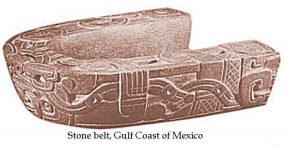 Millennia Old Ceremonial Stone Belt And Maya Pok-A-Tok Ball Game
Ancient Traditions And Customs | Nov 28, 2017
Millennia Old Ceremonial Stone Belt And Maya Pok-A-Tok Ball Game
Ancient Traditions And Customs | Nov 28, 2017 -
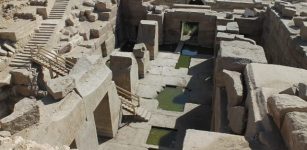 Mysterious Osirion Of Abydos Egypt – Was It An Ancient Energy Plant?
Featured Stories | Feb 26, 2020
Mysterious Osirion Of Abydos Egypt – Was It An Ancient Energy Plant?
Featured Stories | Feb 26, 2020 -
 Why Did Pirates And Sailors Wear Earrings?
Ancient History Facts | Feb 15, 2016
Why Did Pirates And Sailors Wear Earrings?
Ancient History Facts | Feb 15, 2016 -
 Remarkable And Unexplained Historical Sighting Reported By Multiple Witnesses In Wyoming
Featured Stories | Sep 26, 2024
Remarkable And Unexplained Historical Sighting Reported By Multiple Witnesses In Wyoming
Featured Stories | Sep 26, 2024 -
 Saptarishi – Seven Sages Who Guided Humanity During Four Great Ages
Featured Stories | Apr 2, 2019
Saptarishi – Seven Sages Who Guided Humanity During Four Great Ages
Featured Stories | Apr 2, 2019 -
 Kofun: Megalithic Keyhole-Shaped Tombs That Belonged To High Status People In Japan
Civilizations | Oct 31, 2018
Kofun: Megalithic Keyhole-Shaped Tombs That Belonged To High Status People In Japan
Civilizations | Oct 31, 2018 -
 Why Are Christmas Ghost Stories So Fascinating?
Christmas Traditions | Dec 24, 2019
Why Are Christmas Ghost Stories So Fascinating?
Christmas Traditions | Dec 24, 2019 -
 Ancient Mystery Of The Unknown White Bearded Rulers
Ancient Mysteries | Apr 21, 2020
Ancient Mystery Of The Unknown White Bearded Rulers
Ancient Mysteries | Apr 21, 2020 -
 How The Kimono Became A Symbol Of Oppression In Some Parts Of Asia
Featured Stories | Sep 17, 2022
How The Kimono Became A Symbol Of Oppression In Some Parts Of Asia
Featured Stories | Sep 17, 2022 -
 Unexplained Encounters With Invisible Barriers – Mysterious Rays And Energy Fields
Featured Stories | Jul 17, 2018
Unexplained Encounters With Invisible Barriers – Mysterious Rays And Energy Fields
Featured Stories | Jul 17, 2018 -
 Kunlun Mountain – Mythical Dwelling Place Of Gods, Sacred Animals And Symbol Of Axis Mundi In Chinese Mythology
Chinese Mythology | Jan 31, 2019
Kunlun Mountain – Mythical Dwelling Place Of Gods, Sacred Animals And Symbol Of Axis Mundi In Chinese Mythology
Chinese Mythology | Jan 31, 2019 -
 Strange Engraving Made By Knights Templar In French Village – It Doesn’t Make Sense Or Does It? – Part 2
Ancient Mysteries | Oct 9, 2019
Strange Engraving Made By Knights Templar In French Village – It Doesn’t Make Sense Or Does It? – Part 2
Ancient Mysteries | Oct 9, 2019 -
 Mysterious Lost Kingdom Of Urartu And Its Enigmatic History
Featured Stories | Jun 22, 2014
Mysterious Lost Kingdom Of Urartu And Its Enigmatic History
Featured Stories | Jun 22, 2014 -
 Setne Khamwas And The Book Of Magic Written By Thoth
Featured Stories | Jan 20, 2016
Setne Khamwas And The Book Of Magic Written By Thoth
Featured Stories | Jan 20, 2016 -
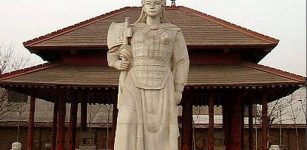 Lady Fu Hao: Brave Warrior Skilled Strategist And China’s First Female General
Featured Stories | Mar 9, 2019
Lady Fu Hao: Brave Warrior Skilled Strategist And China’s First Female General
Featured Stories | Mar 9, 2019 -
 Knights Templar – Strict Rules For Clothing And Eating Habits
Featured Stories | Jan 2, 2018
Knights Templar – Strict Rules For Clothing And Eating Habits
Featured Stories | Jan 2, 2018 -
 Surprising End To Legend Of The Snallygaster That Terrorized Maryland And Washington
Featured Stories | Jun 1, 2020
Surprising End To Legend Of The Snallygaster That Terrorized Maryland And Washington
Featured Stories | Jun 1, 2020 -
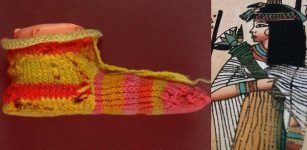 Ancient Egyptians Used Stripy Socks And May Have Invented Them
Ancient History Facts | Dec 5, 2018
Ancient Egyptians Used Stripy Socks And May Have Invented Them
Ancient History Facts | Dec 5, 2018 -
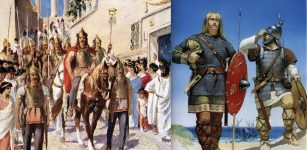 Who Were The Goths And Where Did They Come From?
Civilizations | Apr 16, 2019
Who Were The Goths And Where Did They Come From?
Civilizations | Apr 16, 2019





